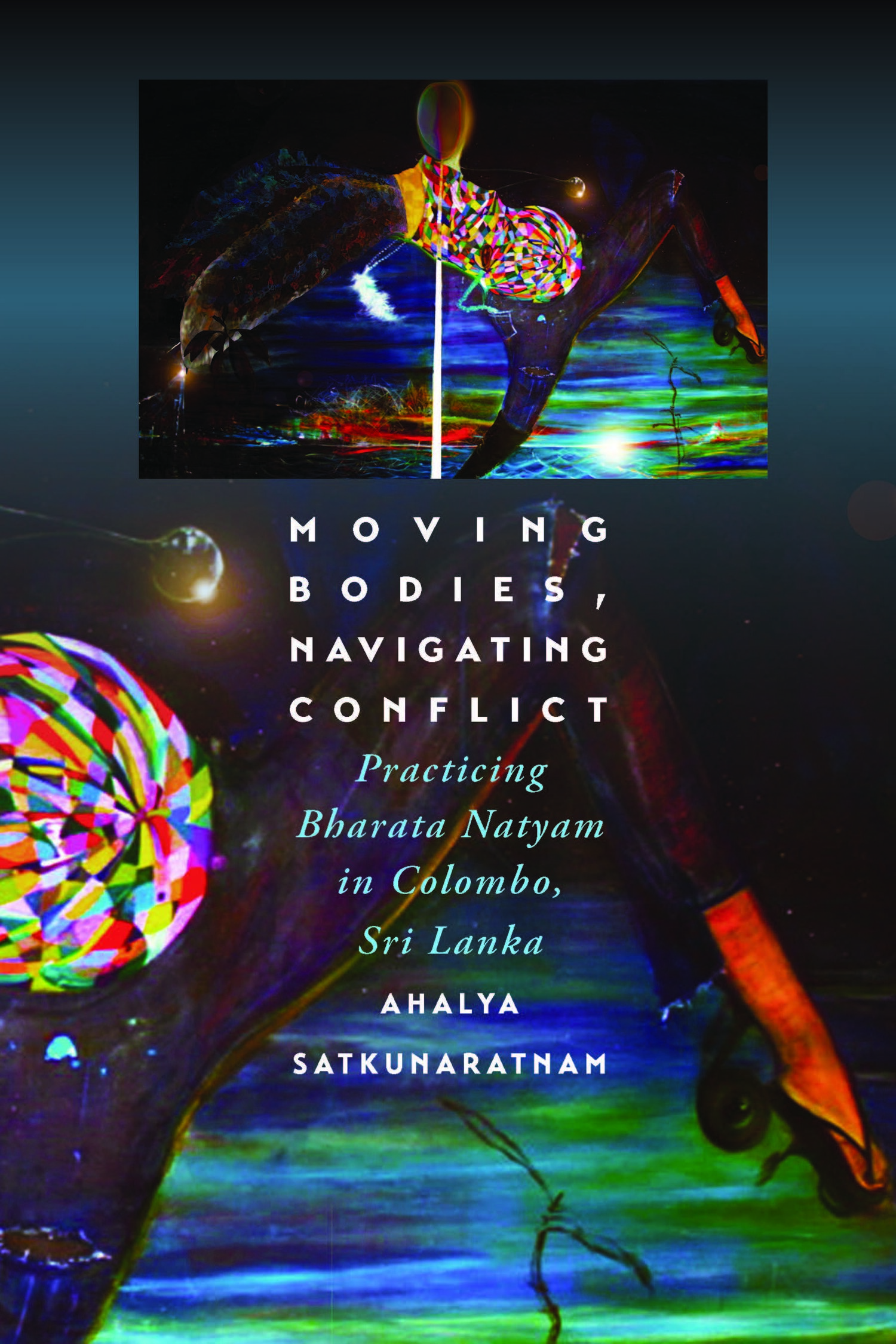Practicing Bharata Natyam in Colombo, Sri Lanka
by Ahalya Satkunaratnam, Wesleyan University Press, April 7, 2020
 Moving Bodies, Navigating Conflict is a groundbreaking ethnographic examination of dance practice in Colombo, Sri Lanka, during the civil war (1983–2009). It is the first book of scholarship on bharata natyam (a classical dance originating in India) in Sri Lanka, and the first on the role of this dance in the country’s war. Focusing on women dancers, Ahalya Satkunaratnam shows how they navigated conditions of conflict and a neoliberal, global economy, resisted nationalism and militarism, and advocated for peace. Her interdisciplinary methodology combines historical analysis, methods of dance studies, and dance ethnography.
Moving Bodies, Navigating Conflict is a groundbreaking ethnographic examination of dance practice in Colombo, Sri Lanka, during the civil war (1983–2009). It is the first book of scholarship on bharata natyam (a classical dance originating in India) in Sri Lanka, and the first on the role of this dance in the country’s war. Focusing on women dancers, Ahalya Satkunaratnam shows how they navigated conditions of conflict and a neoliberal, global economy, resisted nationalism and militarism, and advocated for peace. Her interdisciplinary methodology combines historical analysis, methods of dance studies, and dance ethnography.
Winner of the of the 2021 de la Torre Bueno® First Book Award presented by Dance Studies Association.
Available now via Wesleyan University Press, Barnes & Noble, Chapters Indigo, and Bookshop.
9780819578907
200 pages
Reviews:
-
“A rich study of bharata natyam during and after the decades-long Sri Lankan civil war, Moving Bodies, Navigating Conflict generates critical new insights into the circulation of images and gestures, violence and capital, in the midst of ongoing conflicts that do not end, but instead move into other forms or spaces.”—Mimi Thi Nguyen, Associate Professor of Gender and Women’s Studies, University of Illinois, Urbana-Champaign
-
“The work refreshingly contests the hegemony of India, and examines (bharatanatyam as) a minority form (in Sri Lanka) traversed via bodies at risk. It is especially valuable as an engagement with dance-making beyond the aesthetic, but rather as one of instability and unevenness, policy and peace.”—Nandini Sikand, author of Languid Bodies, Grounded Stances: The Curving Pathway of Neoclassical Odissi Dance
-
“Meticulously researched and thoughtfully argued, Moving Bodies makes a case for understanding dance as central to ethnic conflict while also describing dance as a vehicle for resistance. Satkunaratnam extends dance studies’ concern with representation, race and ethnicity and the nation toward a consideration of identity in its most volatile iterations through civil war. This book aligns dance with experiential reality in a context where daily movement is closely regulated while also identifying dance as a space for imagination. As such, it illustrates in which real-world conflict restrains choreography and the ways in which choreography, through its practitioners, can speak back to a precarious social reality.”—Janet O’Shea, author of At Home in the World:Bharata Natyam on the Global Stage
-
“This book provides a fascinating account of a dance form as a mapping tool of the politics of identity that interrogates the limits and possibility of thinking about citizenship.”—Rachmi Diyah Larasati, author of The Dance That Makes You Vanish: Cultural Reconstruction in Post-Genocide Indonesia
-
“The study is a valuable model for how to weave different layers and information structures around dance transmission in complex political circumstances, and with significant pressures on the ethnographic process. In Satkunaratnam’s often intimate and poetic micro-analyses, we encounter women dance artists and a committed dancer/writer/researcher who address the war around them and fight to find new narrative possibilities for contested identities.” —Dance Studies Association